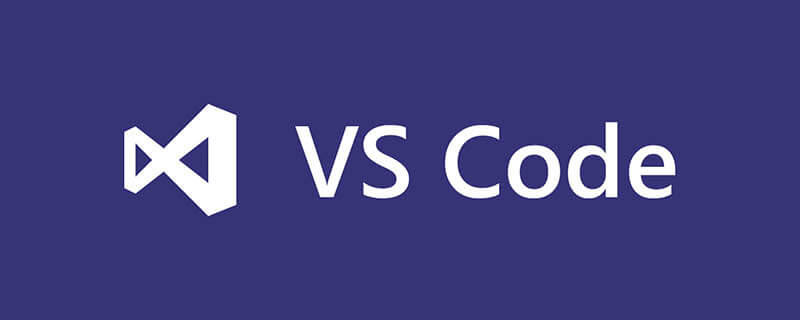
C language is a very important programming language. Many beginners often use the input function scanf() in the process of learning and using C language. Through the scanf() function, we can obtain input data from the user and then store it in the specified variable. This article will introduce the input format examples and analysis of scanf(), and provide you with specific code examples.
In C language, the format control string of the scanf() function is used to specify the format of the input data. Below we will introduce different types of input data as examples.
- Input integer
Suppose we need to get an integer from the user and store it in the variable num. You can use the following format to control the string:
scanf("%d", &num);In this example, %d indicates that an integer value is to be read, and &num indicates that the read integer is to be stored in the variable num.
- Input a floating point number
If we need to get a floating point number and store it in the variable num, we can use the following format to control the string:
scanf("%f", &num);In this example, %f indicates that a floating point value is to be read.
- Input string
When you need to get a string, you can use the following format to control the string:
scanf("%s", str);%s here means What is to be read is a string, and str means that the read string is to be stored in the character array str.
- Enter multiple data
When you need to obtain multiple data from the user, you can use multiple format control strings to specify different types of data. For example, if we need to get an integer and a floating point number and store them into variables num1 and num2, we can use the following format to control the string:
scanf("%d%f", &num1, &num2);In this example, %d%f means Read an integer and a floating point number respectively and store them into variables num1 and num2.
It should be noted that when using the scanf() function, if the input data does not match the data type specified by the format control string, an error will occur or unexpected results will occur. Therefore, when writing a program, we must ensure that the input data type is consistent with the specified format.
The following is a complete sample program that demonstrates how to use the scanf() function to obtain user input:
#includeint main() { int num; float fnum; char str[100]; printf("请输入一个整数:"); scanf("%d", &num); printf("请输入一个浮点数:"); scanf("%f", &fnum); printf("请输入一个字符串:"); scanf("%s", str); printf("您输入的整数是:%d ", num); printf("您输入的浮点数是:%f ", fnum); printf("您输入的字符串是:%s ", str); return 0; }
Through the above sample program, we can enter an integer at runtime , a floating point number and a string, and output them to the screen in sequence.
To summarize, the scanf() function is a very important C language input function. By specifying the format control string, we can obtain different types of input data from the user and store it in the specified variable. middle. When using the scanf() function, you need to ensure that the input data type is consistent with the specified format to avoid errors or unexpected results. I hope the analysis in this article can help everyone better understand and use the scanf() function.
The above is the detailed content of Example and analysis: input format of scanf function in C language. For more information, please follow other related articles on the PHP Chinese website!
 (超详细)VScode中配置C语言环境的方法Dec 05, 2022 pm 07:05 PM
(超详细)VScode中配置C语言环境的方法Dec 05, 2022 pm 07:05 PMVScode中怎么配置C语言环境?下面本篇文章给大家介绍一下VScode配置C语言环境的方法(超详细),希望对大家有所帮助!
 c语言中node是什么意思Jul 06, 2022 pm 03:51 PM
c语言中node是什么意思Jul 06, 2022 pm 03:51 PM在C语言中,node是用于定义链表结点的名称,通常在数据结构中用作结点的类型名,语法为“struct Node{...};”;结构和类在定义出名称以后,直接用该名称就可以定义对象,C语言中还存在“Node * a”和“Node* &a”。
 c语言怎么将数字转换成字符串Jan 04, 2023 pm 03:20 PM
c语言怎么将数字转换成字符串Jan 04, 2023 pm 03:20 PMc语言将数字转换成字符串的方法:1、ascii码操作,在原数字的基础上加“0x30”,语法“数字+0x30”,会存储数字对应的字符ascii码;2、使用itoa(),可以把整型数转换成字符串,语法“itoa(number1,string,数字);”;3、使用sprintf(),可以能够根据指定的需求,格式化内容,存储至指针指向的字符串。
 c语言开根号运算符是什么Mar 06, 2023 pm 02:39 PM
c语言开根号运算符是什么Mar 06, 2023 pm 02:39 PM在c语言中,没有开根号运算符,开根号使用的是内置函数“sqrt()”,使用语法“sqrt(数值x)”;例如“sqrt(4)”,就是对4进行平方根运算,结果为2。sqrt()是c语言内置的开根号运算函数,其运算结果是函数变量的算术平方根;该函数既不能运算负数值,也不能输出虚数结果。
 c语言数组如何初始化Jan 04, 2023 pm 03:36 PM
c语言数组如何初始化Jan 04, 2023 pm 03:36 PMC语言数组初始化的三种方式:1、在定义时直接赋值,语法“数据类型 arrayName[index] = {值};”;2、利用for循环初始化,语法“for (int i=0;i<3;i++) {arr[i] = i;}”;3、使用memset()函数初始化,语法“memset(arr, 0, sizeof(int) * 3)”。
 c语言合法标识符的要求是什么Aug 27, 2020 pm 01:47 PM
c语言合法标识符的要求是什么Aug 27, 2020 pm 01:47 PMc语言合法标识符的要求是:1、标识符只能由字母(A~Z, a~z)、数字(0~9)和下划线(_)组成;2、第一个字符必须是字母或下划线,不能是数字;3、标识符中的大小写字母是有区别的,代表不同含义;4、标识符不能是关键字。
 c语言中源文件编译后生成什么文件Nov 23, 2022 pm 07:44 PM
c语言中源文件编译后生成什么文件Nov 23, 2022 pm 07:44 PMc语言编译后生成“.OBJ”的二进制文件(目标文件)。在C语言中,源程序(.c文件)经过编译程序编译之后,会生成一个后缀为“.OBJ”的二进制文件(称为目标文件);最后还要由称为“连接程序”(Link)的软件,把此“.OBJ”文件与c语言提供的各种库函数连接在一起,生成一个后缀“.EXE”的可执行文件。
 c语言可以处理的文件类型是什么Sep 19, 2022 pm 03:53 PM
c语言可以处理的文件类型是什么Sep 19, 2022 pm 03:53 PMc语言可以处理的文件类型是:文本文件和二进制文件。C语言所能够处理文件是按照存放形式分为文本文件和二进制文件:1、文本文件存储的是一个ASCII码,文件的内容可以直接进行输入输出;2、二进制文件直接将字符存储,不能将二进制文件的内容直接输出到屏幕上。


Hot AI Tools

Undresser.AI Undress
AI-powered app for creating realistic nude photos

AI Clothes Remover
Online AI tool for removing clothes from photos.

Undress AI Tool
Undress images for free

Clothoff.io
AI clothes remover

AI Hentai Generator
Generate AI Hentai for free.

Hot Article

Hot Tools

WebStorm Mac version
Useful JavaScript development tools

SAP NetWeaver Server Adapter for Eclipse
Integrate Eclipse with SAP NetWeaver application server.

MantisBT
Mantis is an easy-to-deploy web-based defect tracking tool designed to aid in product defect tracking. It requires PHP, MySQL and a web server. Check out our demo and hosting services.

SublimeText3 Chinese version
Chinese version, very easy to use

Dreamweaver Mac version
Visual web development tools





